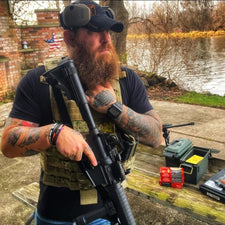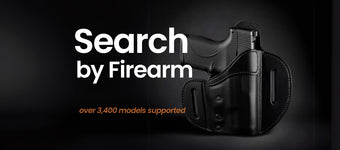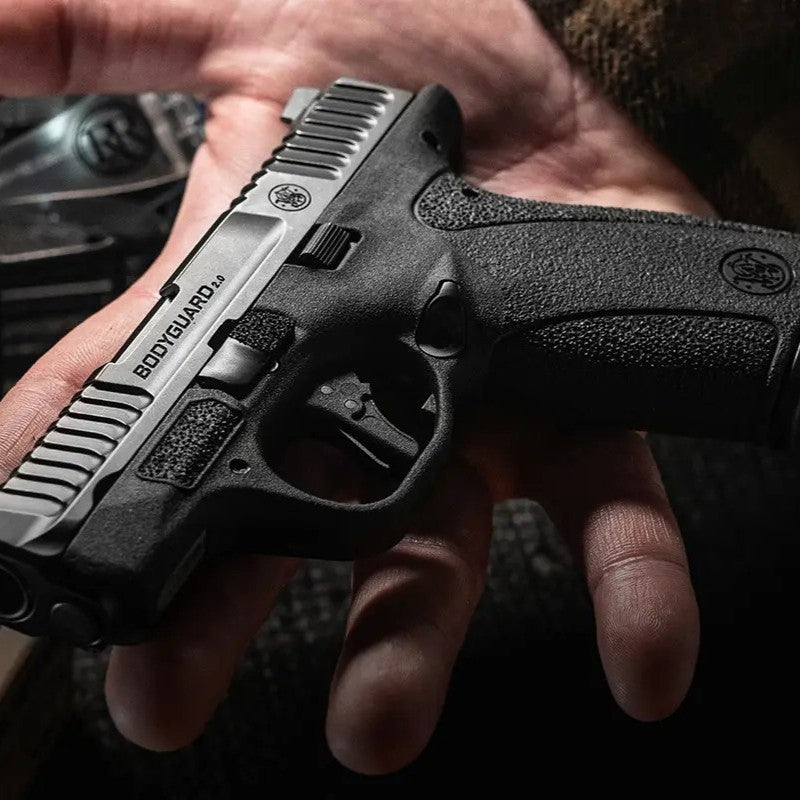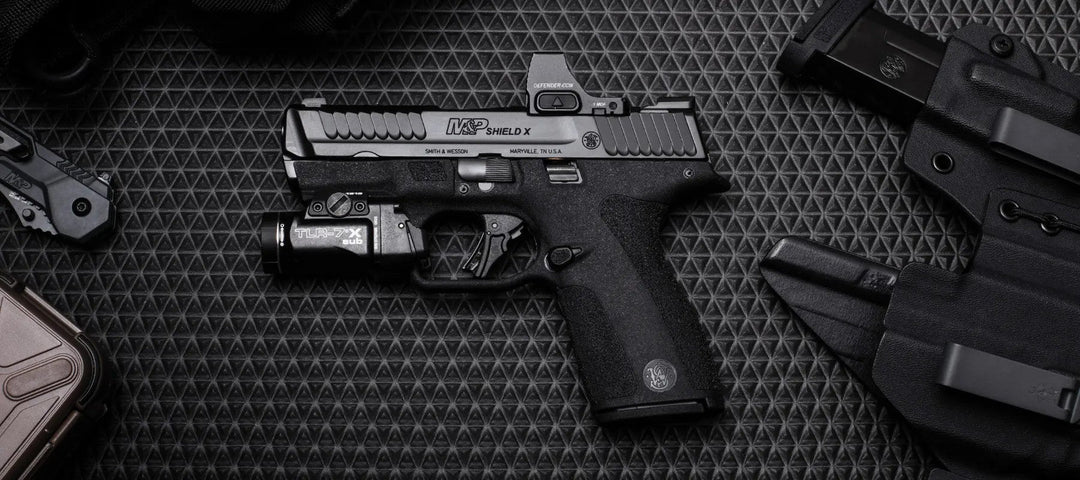Tips and Tricks for Flying with your Firearm
Tips and Tricks for Flying with Your Firearm: A Complete Guide for Armed Travelers
Flying with a firearm might seem intimidating, but with the right preparation and awareness of laws, it can be straightforward and stress-free. Whether you're a concealed carrier heading to a training course or a sports shooter traveling for competition, the key is knowing the rules, planning ahead, and packing smart. This guide dives deep into TSA firearm transportation guidelines, airline policy comparisons, concealed carry travel laws, and the best gear choices—giving you the confidence to navigate airports like a pro.
What Are TSA Firearm Transportation Guidelines and How Do They Work?
If you’ve ever asked, “Can I fly with my gun?” the Transportation Security Administration (TSA) has clear—but non-negotiable—rules you must follow. All firearms must be unloaded, locked in a hard-sided container, and checked as luggage only. You cannot bring firearms through security or carry them onto the plane in any form.
You’ll need to declare your firearm at the ticket counter. The airline will have you fill out a declaration tag, often placing it inside the gun case. TSA agents don’t need to open the case unless specifically requested, but the bag will likely go through additional screening behind the scenes.
Your ammunition must be in a factory box or a secure ammo case and can be stored in the same hard-sided case as the firearm—or separately in your checked luggage, depending on airline policies. While TSA allows up to 11 pounds of ammunition, your carrier might impose stricter limits.
Comparing Airline Firearm Policies: Which Carriers Make It Easier?
Airlines technically follow TSA standards, but they often add their own layers of red tape. That’s why an airline firearm policy comparison is crucial before booking your flight. Some carriers streamline the process—others make it frustrating.
Delta Airlines, for example, has strict policies on case types and ammo placement but provides clear, written procedures. American Airlines allows ammo in the same case, but their counter staff sometimes inconsistently apply the rules. Southwest is often praised for its pro-gun passenger experience, but like others, its policies vary slightly by airport location.
Always check both your departure and arrival airport rules, and print the airline’s firearm policy from their website to have on hand if questions arise at the counter. A small misunderstanding can delay your check-in or worse, leave you grounded.
How Do Concealed Carry Laws Affect Flying With a Firearm?
Even if you're legally flying with a gun, concealed carry reciprocity and travel laws will affect what you can do when you land. Just because your home state honors your CCW permit doesn't mean your destination does.
Use tools like USCCA’s reciprocity map or Handgunlaw.us to check whether your permit is recognized at your destination. If it isn’t, don’t carry concealed—store the firearm legally in your hotel, or better yet, choose a state-friendly route.
Be cautious during layovers or unplanned diversions. If you’re forced to retrieve your luggage in a state like New York or New Jersey where your permit isn’t valid, possessing that gun—even legally checked—can result in criminal charges. This is one of the most overlooked risks when flying armed.
Gun Case and Lock Recommendations: What Gear Should You Use?
Choosing the right gun case and TSA-approved locks makes the difference between a smooth trip and a security nightmare. Go for a hard-sided container that’s crushproof, tamper-resistant, and designed to accommodate foam inserts.
Pelican and Vault by Pelican cases are gold standards for firearm transport. Their reinforced latches, integrated pressure valves, and customizable foam interiors offer both security and peace of mind.
You’ll also need TSA-compliant padlocks, but be careful: for firearm cases, only you—not TSA—must have access. That means using non-TSA universal locks, not the “Travel Sentry” kind you’d use on a suitcase. This nuance is critical: if a TSA agent demands access, they’ll summon you rather than unlock it themselves.
Essential Tips and Tricks:
Before You Fly
1. Know the Laws
- Federal: TSA allows transport of unloaded firearms in checked baggage only.
- State/Local: Check gun laws at your departure, layover, and arrival locations—laws vary significantly.
- International: Rules differ greatly—consult the embassy or airline directly.
2. Check Airline Policies
- Each airline has its own rules on how firearms and ammo are packed and declared. Always check their website or call ahead.
- Example: Some limit ammo weight to 11 lbs (5 kg).
Packing Your Firearm
3. Use a Hard-Sided, Lockable Case
- Must be completely secure (no pry points).
- TSA-approved locks are NOT required—only you should have the key or combination.
4. Firearm Must Be Unloaded
- Magazine removed.
- Chamber visibly empty.
- TSA may ask you to show it's unloaded during check-in.
5. Secure It Inside Your Luggage
- The locked gun case can be:
- A standalone checked item.
- Or inside a larger suitcase (recommended for discretion).
Packing Ammunition
6. Ammo Must Be in Proper Containers
- Must be in original retail boxes or similar secure, fiber/cardboard/metal/plastic containers designed to carry ammunition.
- Loose rounds or loaded magazines are not allowed unless stored properly.
7. Weight Limits Apply
- Most airlines limit to 11 lbs (5 kg) per person.
- Ammo can be in the same case as the firearm if securely packed.
At the Airport
8. Declare at Check-In
- Walk up to the ticket counter—do not use curbside check-in or a kiosk.
- Calmly state: “I need to declare a firearm in my checked bag.”
9. Sign a Declaration Form
- You’ll fill out a form that gets placed inside or outside the gun case, depending on airline policy.
10. Be Ready for Inspection
- TSA may request a secondary screening in your presence. Stay near the counter after check-in for a few minutes.
Pro Tips
- Arrive Early: Budget extra time—especially if it’s your first time flying with a firearm.
- Use Non-TSA Locks: Keep your gear secure. TSA must call you if they need access.
- Travel Light: Fewer bags = less complexity.
- Practice Politeness: Airline and TSA agents handle this regularly; being respectful makes the process smoother.
- Save Receipts and Documentation: If asked, you’ll want proof of legality, especially in strict jurisdictions.
- If traveling with multiple guns, label each firearm and magazine slot inside the case. It speeds up checks and keeps you organized at your destination.
Final Thoughts: Safety + Preparation = Smooth Travel
Flying with a firearm isn’t difficult—but it does require preparation, patience, and respect for the rules. By understanding federal, state, and airline-specific regulations, and following the proper packing procedures, you can ensure your trip is safe, legal, and hassle-free.
If you're unsure about anything, don’t hesitate to call your airline in advance or consult legal counsel. When in doubt—ask, don’t assume.

Richard Calvette
Firearms Expert, Urban Carry Holsters
I've been with Urban Carry Holsters since 2020, proudly serving as the Firearms Expert. Before that, I served 8 years in the United States Marine Corps, including a deployment to Iraq from 2009 to 2010. During my time in the Infantry as a Sergeant, I developed a deep interest in the wide range of firearms we used. It fascinated me to learn why specific weapons were chosen for different missions and roles.Breaking into the firearms industry wasn't easy, but persistence paid off. While attending a trade show, I discovered the Sonoran Desert Institute. That opportunity led me to earn an Associate of Science in Firearms Technology, along with certifications as a Pistol Expert and Range Safety Officer.My passion for firearms continues to grow every day. I'm always learning, always improving, and always striving to bring that knowledge and experience to the work we do here at Urban Carry.





